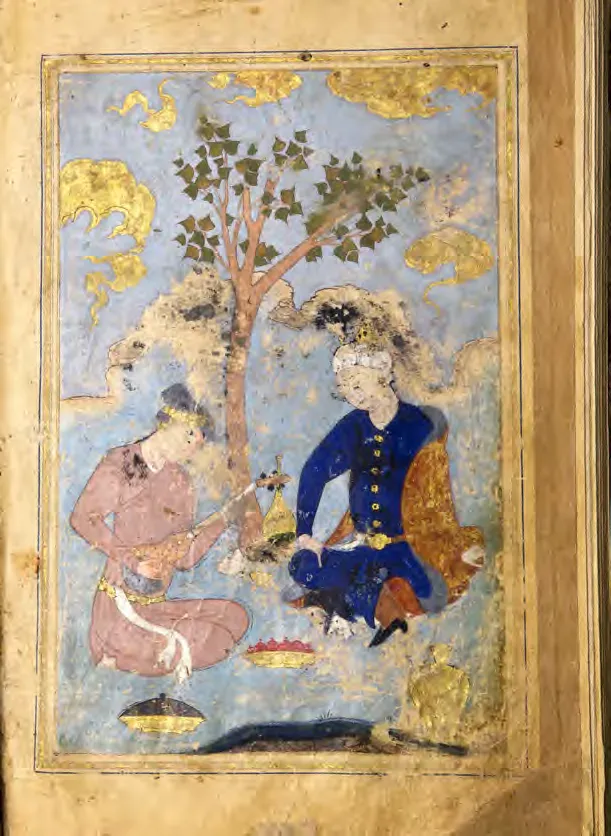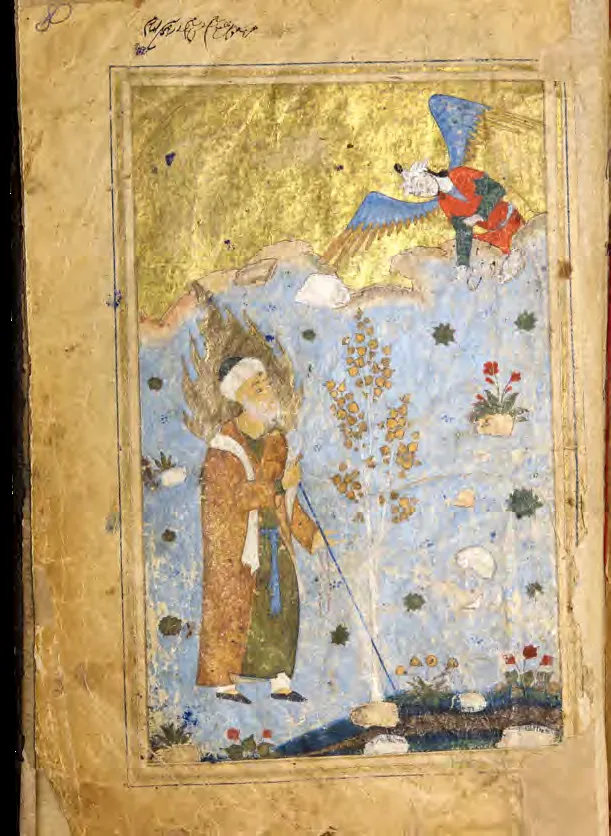
Sultan Muhammad Khandan (nicknamed “communicable fellow” for his eccentric character) is mentioned in a number of oriental works, as one of the five best pupils of the famous Herat calligrapher Sultan-Ali al-Mashhedi, who according Kazi Ahmed became the outstanding artisans of their time and epoch 24. It is known that Khandan was buried in Herat, but as for the date of his death scholars are not in full agreement; it is variously given as 1509, 1525 or 1543. Meanwhile the date of the manuscript places the date of his death even later in 1551. According to information given by ’Alishir Nawa’i (d. 1501), who was in contact with the artist over some years, at the time the “Diwan” was copied he was already rather advanced in years.
Obviously, the manuscript was made in Herat, but were the miniatures also created there? As has already been mentioned, in the 16th century miniature art declined in Herat. The miniatures could have been drawn on blank folios left by Khandan after his death in another cultural center, perhaps, in Samarkand or Bukhara.
There are several typical features of the three miniatures in this copy: the laconic landscape with analogous in the copies of “Anwar-i-Suhaili” from the Institute (see above), “Khamsa” by Nawai, 1523 in the National Library in Saint-Petersburg and in a number of the miniatures forming the Mawarannahr cycle: the characters are large, which is typical of the Bukhara miniature style of the second half of the 16th century, where one or two large figures occupy a folio, sometimes among a few other characters.

The angels on two miniatures (“Miraj” and “The old man and angel”) are similar to those in the Bukharian copy of al-Kashifi (The Indian Office Library), in a colophon of which the copyist Shah Muhammad Uzbek is mentioned.
The interpretation of the landscape with a small number of large figures recalls a row of illustrations of “Shahnama” copied in Samarkand in 1600 by the calligrapher Adina al-Bukhari. But the miniatures in “Diwan” contain finely drawn characters; they show the existing links with the traditions of the Timurid school in Herat.
In the second half of the 16th century, the appearance in the pictures (perhaps, under some Iranian influence) of a large single figure or a couple (a noble youth and a servant or a loving couple as the subject preferred by the Bukhara miniaturist Abdulla) became typical of the Central Asian miniatures.
You can learn more about this topic in the book-album “The Collection of the Al-Biruni Institute of Oriental studies, the Academy of Sciences of the Republic of Uzbekistan” (part five, “Miniature and Calligraphy”) (Volume XXV) from the series "The Cultural Legacy of Uzbekistan".
The main sponsor of the project is the oilfield services company Eriell-Group.
